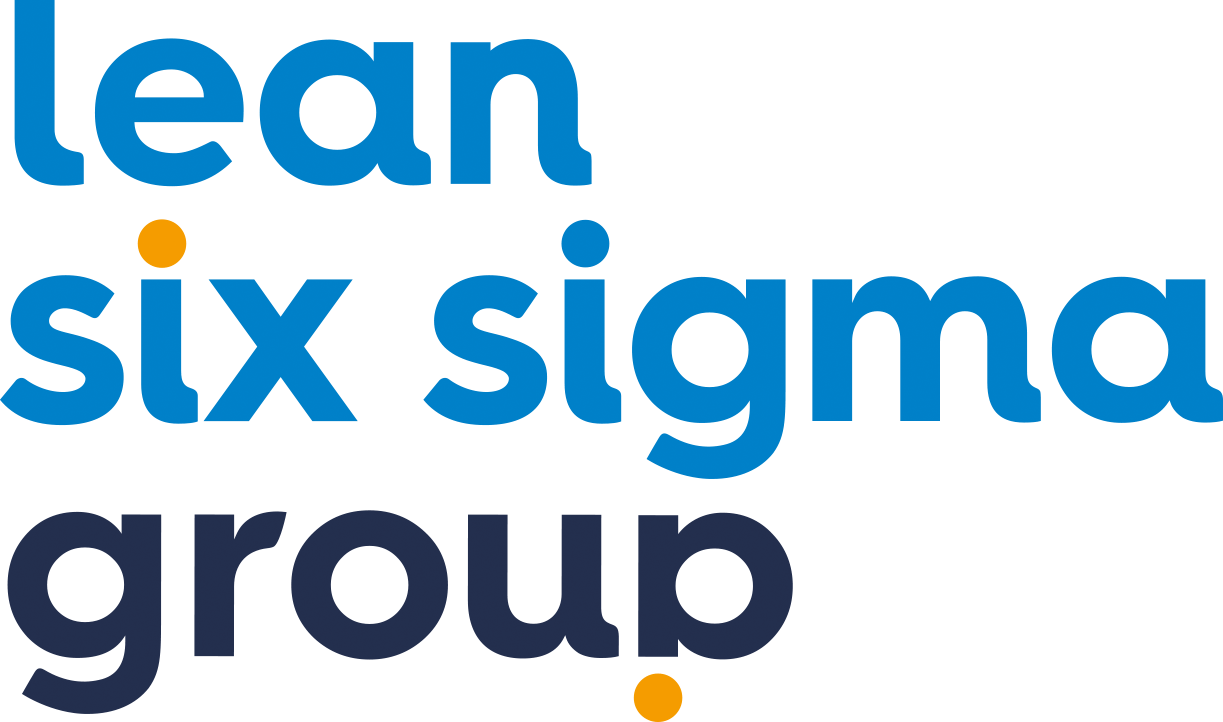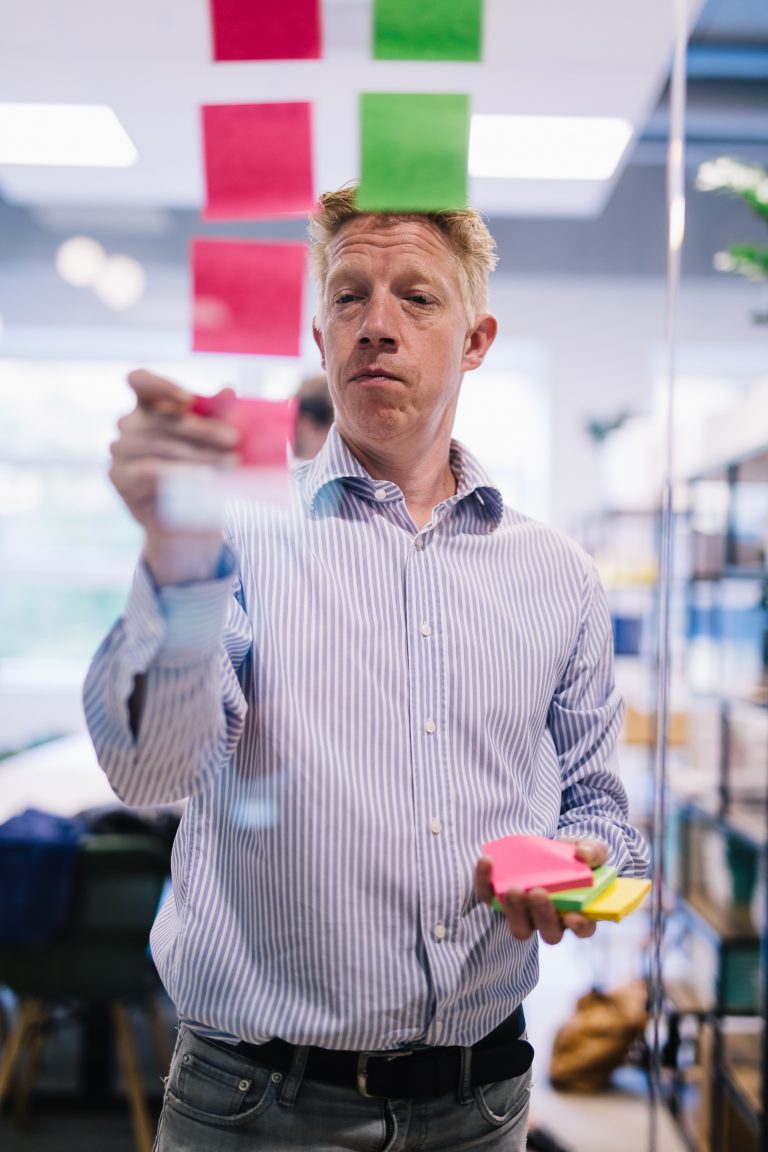Lean Six Sigma is a methodology, proven and applied on a global basis, which delivers visible and lasting improvements to operational results. The focus here is on what the customer considers really important. This approach leads to the simultaneous reduction of costs, increase in customer satisfaction and reduced runtime. It involves investing in your own employees and capitalising on their knowledge and skills.
Lean Six Sigma provides a framework according to which organisations can constantly improve in a structured way. The implementation of Lean Six Sigma gives organisations a purposeful approach that allows them to convert strategy into actual results and achieve more success than their rivals.
Lean Six Sigma projects ensure that improvements to operational results are sustainable. Solutions to operational problems become more effective and lasting. The dividends paid by the implementation of Lean Six Sigma vary, but are always a multiple of the investment made. A Return on Investment of four times yielded by Green Belt training – taking total time and revenue investment into account – is the rule and not the exception. Successful Lean Six Sigma implementation programmes achieve ROI’s of 40 to as much as 80.
Why is Lean Six Sigma so popular?
Lean Six Sigma is so popular because it has helped many thousands of companies around the world become (more) successful and achieve their target results. It is the most effective methodology for realising lower operational costs, higher profits and greater customer satisfaction.
For many years, the application of Lean Six Sigma has yielded lasting results at major companies and organisations in the United Kingdom, including Shell, Tesco, Ministry of Defense etc. In the United States, Lean Six Sigma forms an important part of the corporate strategies of almost all the top-500 companies. The methodology has evolved over the years and can be generically applied to all imaginable processes found in any type of organisation you can think of.
Is Lean Six Sigma also suited to my organization?
Lean Six Sigma started off in industry, but has successfully manifested itself in virtually every kind of organisation over the past fifteen years. Here are some actual examples from a range of sectors:
- Banks and insurers: reduction in the time taken to process mortgage applications or settle insurance claims;
- Telecom & utilities: improvement in the ability of helpdesks to solve problems, driving back / preventing the number of reported incidents;
- Trade, transport & logistics: increase in First Time Right deliveries, lowering of supply costs, reduction in the number of pick errors;
- Healthcare: greater efficiency in operating theatres with fewer errors and quicker patient recovery times;
- Government: faster and more transparent processing of permit requests;
- Commercial services: increase in customer value by collectively improving and simplifying customer processes in a structured way.
How does Lean Six Sigma work?
Lean Six Sigma focuses on increasing customer satisfaction and generating (financial) results for organisations. By concentrating on what is truly important to the customer and cutting errors in execution, the number of process steps is reduced (Lean) and the outcome of processes becomes predictable (Six Sigma).
The strength of Lean Six Sigma is found in four areas:
- Improvement of quality Lean Six Sigma provides a strong foundation for the improvement of quality. By training an organisation’s own employees, they are able to improve their processes themselves. This is done in the form of a project with the support of the DMAIC methodology. Middle and upper management are also actively involved in this process;
- Improvement of runtime Lean Six Sigma exposes the so-called ‘hidden factory’. Organisations often have numerous processes and procedures for solving problems, but these demand a lot of time and frequently cause frustration. For the most part, organisations do not have the time to determine exactly what is wrong and what the sources of waste are. DMAIC exposes the hidden factory and breaks it down;
- Organisations learn how to improve themselves Focus is on added value for the customer. Fulfilling the wishes of the customer does not only increase customer satisfaction, it helps organisations constantly re-evaluate and improve their services, products and processes;
- Better operational results Improvement of processes with Lean Six Sigma directly contributes to positive operational results. According to Lean Six Sigma, quality is not a goal in itself, but is a means for achieving the actual goal, i.e. the improvement of operational results by generating value for the customer.
How to get started with Lean Six Sigma
The easiest way to get started with Lean Six Sigma is by participating in the ‘What is Lean Six Sigma’ workshop. Over the course of this four-hour workshop, an interactive approach is used to introduce you to the methodology, the tools and the usability of Lean and Six Sigma. This workshop is specifically intended for managers and employees who play a leading role in achieving Operational Excellence.
However, if you have already been convinced by the Lean Six Sigma methodology and would like to immediately start Green Belt or Black Belt training, it is important that you have a project to which you can apply Lean Six Sigma. You see, Lean Six Sigma is not just about theoretic training. Instead, the best results are achieved if you immediately apply it in practice. In achieving the desired results, you are supported by a coach in the form of a (Master) Black Belt.
Is your organisation still in the initial phase of process-based improvement? Then Lean Green Belt or Lean Black Belt training may be a more suitable option. To help your organisation establish, improve and manage processes in a structured way, it may be worth considering Lean BPM. Our consultants will gladly tell you more about this.
If there is wider Lean Six Sigma interest within your organisation, in-house training – or even full implementation of Lean Six Sigma into your organisation – may be the best option. Thanks to the positive results yielded by these projects, support for organisation-wide achievement of these results is generated among management. A logical subsequent step is full implementation, during which management also receives training. The right choice of projects, selection of the correct Green Belts and Black Belts and support provided here are essential. It goes without saying that every implementation is unique and that its precise interpretation will vary as per organisation. Is your organisation not quite ready for full implementation? Would you nonetheless like to take the initial steps by occasionally working on Lean and Six Sigma improvement projects? Whatever your situation, support and advice from Lean Six Sigma Group is possible.
Lean Six Sigma & Statistics?
The foundation of Lean Six Sigma is data and facts. It is all about making results measurable, obtaining an understanding of the true wishes of the customer, reliable measurement of current performance and objective testing of root causes, so that you are certain that the solutions implemented will have the desired effect. For these purposes, Lean Six Sigma Green Belts and Black Belts have a toolbox based on decades of experience and best practices from Lean and Six Sigma companies. It contains more than 150 tools from Lean Manufacturing – such as Value Stream Mapping and Process Line Balancing – and Statistics Tools such as Hypothesis Testing, Design Of Experiments (DOE) and Statistical Process Control (SPC).
For an obligation-free consultation to discuss what Lean Six Sigma can offer your organisation, please contact one of our consultants by sending an email to info@leansixsigmagroup.co.uk or calling 020 3318 6463.




